Research
Our department has a strong research program in the areas of image processing and image-based pattern recognition. Many results and algorithms we developed are generic in their nature and find their use in numerous application areas. This includes digital photography, surveillance systems, image forensics, biomedicine, remote sensing, astronomy and art conservation.
On this page, we summarize the most important problems we work or worked on. Each area contains a short text explaining in brief results we achieved including links to related journal papers.
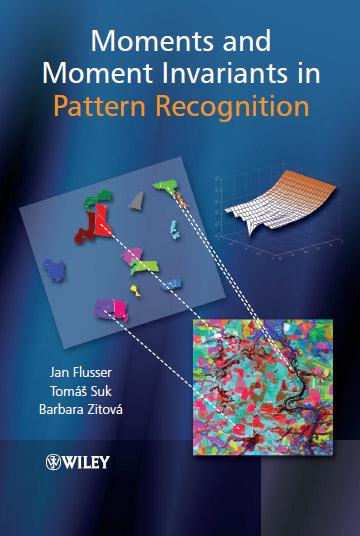
Theory of invariants and its application to recognition
During last fifteen years we contributed significantly to the theory of moments invariants. This includes derivation of complete systems of invariants with respect to affine transformation, with respect to blurring by kernels with various types of symmetries and also invariants to combined degradations. These results are explained in more detail under the following links.
- Rotation moment invariants
- Affine moment invariants
- 3D rotation moment invariants
- Rotation moment invariants of 2D vector fields
- Affine moment invariants of vector fields
- Affine moment invariants of tensor fields
- Moment invariants to convolution
- Point-based projective invariants

The software for generation of moment invariants can be downloded here.
Our experience with moments and moment invariants gained from years of research in this area resulted in two books
covering the current state-of-the-art and presenting the latest developments in this field.
The first book is Moments and Moment Invariants in Pattern Recognition. The book presents a unique overview of recent as well as traditional image analysis and pattern recognition methods based on image moments. Read more.
The second book is 2D and 3D Image Analysis by Moments.
It is the substantial extension of the first book. Particularly, recognition of 3D objects is analysed in more details. Read more.
 Restoration of degraded images
Restoration of degraded images
In recent years, we work on algorithms removing a wide variety of degradations that are common in digital imaging.
We consider mainly noise, blurring and insufficient resolution.
The main research topics are
- applications in mobile device
- Blind Deconvolution with Model Discrepancies (benchmark dataset)
- Fast convolutional sparse coding using matrix inversion lemma
- Decomposition of Space-Variant Blur
- Blind deconvolution using heavy-tailed gradient priors
- Algorithm for fast blind deconvolution and superresolution
- Multi-channel blind deconvolution
- Super-resolution
- Motion deblurring including spatially varying blur
- Edge-preserving denoising
- Color transformations
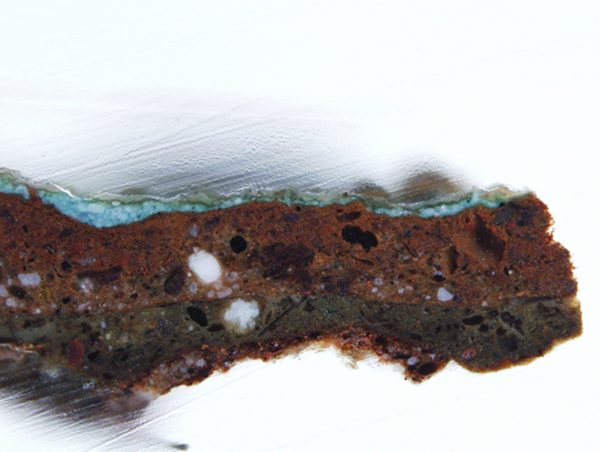 Applications in cultural heritage and art restoration
Applications in cultural heritage and art restoration
We have been involved in several cultural heritage applications. Nowadays, art restorers and conservators use various visual sensors for better analysis of old artworks and modern image processing methods can facilitate their work. The following list presents areas where our team was involved
- Microscopic samples from material research - image preprocessing and analysis
- Performance evaluation of image segmentation methods on microscopic samples
- Nephele: extended database system for material research including content based image retrieval
- Virtual fresco restoration
- Denoising of underdrawing IR images
- Evaluation of St. Vitus mosaic conservation
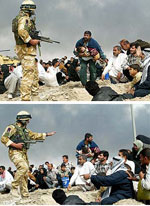 Image Forensics
Image Forensics
We are active in developing mathematical and computational algorithms capable of detecting the traces of tampering in digital images. Below are short descriptions of some of our past and current work in this field.
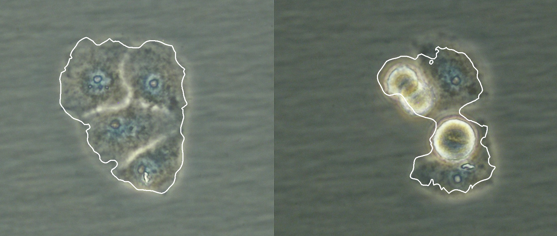 Microscopy images processing
Microscopy images processing
Manual processing of microscopy images is very tedious and prone to errors, therefore we develop a new automated methods. Main tasks in processing are segmentation of cells from the background, segmentation of individual cells and their tracking over time.
 Medical Imaging
Medical Imaging
- PET denoising and deconvolution using prior information from CT or MRI
- Fusion of PET with CT or MRI
- Temporomandibular joint: digital image processing of thermal images
- Temporal analysis of 3D data in nuclear medicine
- Influence of injection dose and body parameters on PET image quality by means of Monte Carlo simulations
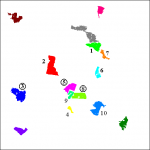 Image registration
Image registration
read more
Image registration is a process of matching and overlaying two or more images of the same scene. It is one of the most important image processing operations in medical imaging, remote sensing, surveillance, robot vision, quality inspection, and in many others. Image registration is a necessary step when performing image fusion, detecting changes, and importing the images into information systems.
The main publications can be found here
 Projects
Projects
We have been involved in many projects with other universities, research institutes and commercial companies. Here are several examples of the results of such cooperation.

 Other (mostly noteworthy master theses)
Other (mostly noteworthy master theses)